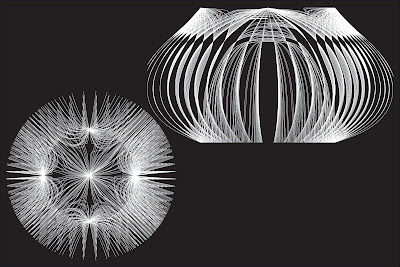Workshop Series.Morfologías Algorítmicas
22,23 y 24 de Noviembre, horario del taller por confirmar.
Se otorgara Constancia con valor curricular 24hrs
Morfologías Algorítmicas es un taller de vanguardia centrado en el aprovechamiento de tecnologias de punta y los nuevos enfoques en la practica arquitectonica.
Destinado principalmente a Arquitectos, Diseñadores y Urbanistas; este Workshop tiene como objetivo proporcionar a los participantes los conocimientos teoricos y practicos, asi como los recursos tecnologicos que les permitan abordar diversos problemas de diseño desde una panoramica amplia e inovadora.
Apoyándose de una plataforma potente y flexible, los participantes aprenderán a generar, analizar y racionalizar morfologías complejas, formas orgánicas libres y algoritmos avanzados aplicables en distintas etapas del proceso de Diseño.
Como nuestras herramientas de trabajo se utilizara: Rhinoceros+Grasshopper+WeaverBird
Detalles:
El taller se divide en 2 bloques:
1.- Generación y Analisis de Superficies complejas [Rhinoceros]
•Introducción a la interfase de Rhinoceros
•Tipos de objetos de Rhino
•Sólidos primitivos
•Superficies rápidas
•Generación de superficies complejas de doble curvatura
•Analisis de superficies
•Exportar Archivos
2.- Generación de Algoritmos Computacionales aplicados al Diseño [Grasshopper]
•Introducción al Scripting
•Scripting vs Programacion Visual
•Introducción a la interfase de Grasshopper
•Alcances y limitaciones
•Flujo de trabajo
•Data Matching
•Data vizualization
•Generación y racionalización de Geometrías complejas
•Algorítmos Generativos
•Algorítmos Paramétricos
•Algorítmos Responsivos
•Proyectos finales
El taller esta avalado por la Benemérita Universidad Autónoma de Puebla y por Complex Geometry, y se entregaran reconocimientos por parte de BUAP a todos los participantes.
Procedimiento de inscripción
Para formalizar su inscripción y asegurar su lugar en el workshop deberán hacer el depósito de $1500 a nombre de la Facultad de Arquitectura
Banco HSBC con No. de Cuenta: 4003895570
Enviar copia escaneada del baucher a ca116fabuap@gmail.com, Anexar los siguientes datos:
- Nombre completo
- Universidad de Procedencia / Datos de Profesión






















































